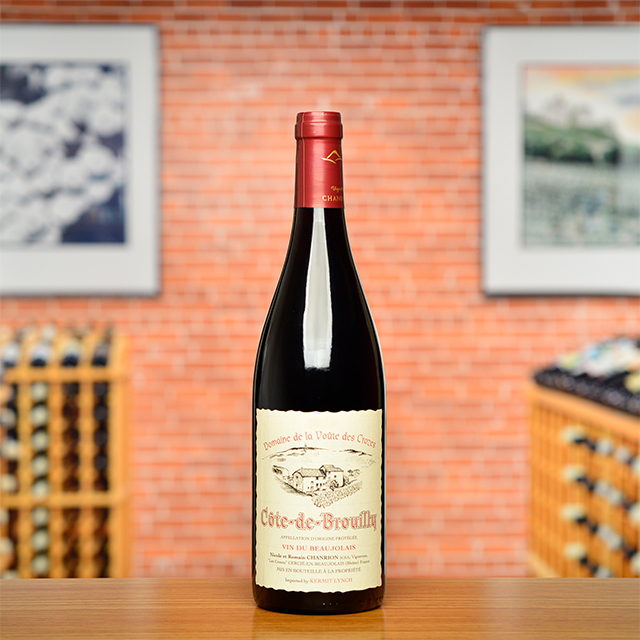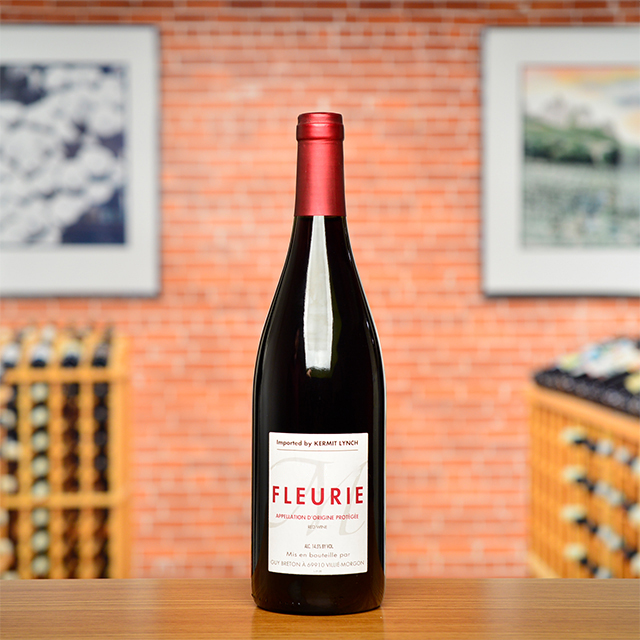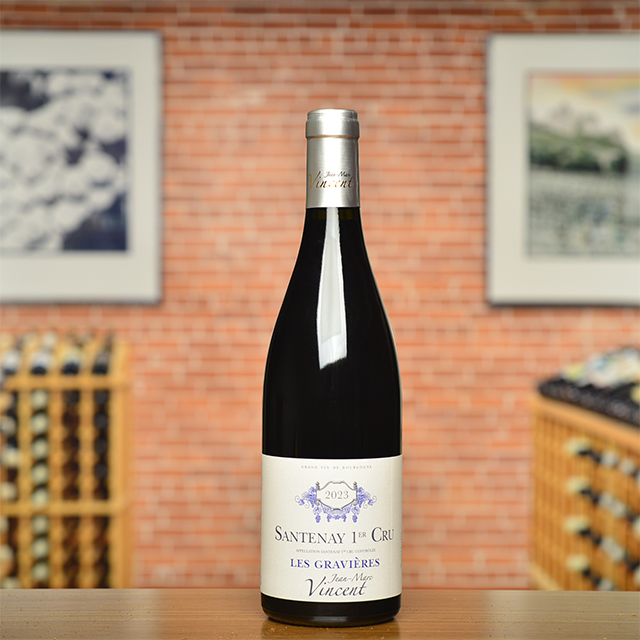Notify me
2021 Morgon
M. & C. Lapierre
More than any other grower, Marcel Lapierre did pioneering work that paved the way for what we do today as a company. I feel fortunate to have joined many casual gatherings at the rough-hewn oak table in the courtyard of his domaine in Les Che?nes, a hamlet of Villie? Morgon. His cuverie, cellars, family home, and some of his vineyards were all there, and it was the heartbeat of the entire Beaujolais region. As I lived only an hour away in Beaune, I went often, and he was the type of person who made sure that a foreigner with a funny accent felt comfortable. Wine would be poured, saucisson would be sliced, and (most importantly) conversation would flow—open debate reigned and nothing was off the table, so to speak. Several of the most memorable bottles of Beaujolais I’ve ever tasted were served there. A magnum of his 1989 Morgon looms large. Marcel was always generous and gracious with his time and knowledge, and he had an insatiable curiosity and ever-present mischievous sparkle.
I know he would be extremely proud of the way his talented son and daughter, Mathieu and Camille, have maintained the standards he set during his storied career. They have continued to imbue their wines and the domaine that bears Marcel’s name with the same spirit, and the wines are as good as ever. Lapierre is still on the cutting edge globally of what can be achieved with zero-intervention, totally free winemaking, which of course must by definition start with maniacal viticulture that produces grapes that can stand up to the rigors of their technique (or lack thereof!). The Lapierre name remains a benchmark for the greatest Gamay produced on planet Earth. Their new and recently delivered 2021 vintage is delicious proof.
—Dixon Brooke
| Wine Type: | red |
| Vintage: | 2021 |
| Bottle Size: | 750mL |
| Blend: | Gamay |
| Appellation: | Morgon |
| Country: | France |
| Region: | Beaujolais |
| Producer: | M. & C. Lapierre |
| Winemaker: | Mathieu & Camille Lapierre |
| Vineyard: | 60 yrs, 10 ha |
| Soil: | Granitic Gravel |
| Aging: | Wines aged on fine lees in old Burgundy barrels |
| Farming: | Organic (certified) |
| Alcohol: | 12.5% |
More from this Producer or Region

2024 Côte-de-Brouilly
France | Beaujolais
Loads of fun—juicy, round, structured, yet always elegant and focused. A classic favorite.

2023 Beaujolais Blanc “Clos de Rochebonne”
France | Beaujolais
Rochebonne offers Chardonnay fruit that’s both racy and sun-kissed

2018 Brouilly
France | Beaujolais
A generous dash of plump, sun-ripened fruit enveloping a granite core

2025 Beaujolais Nouveau
France | Beaujolais
Limited Quantities! ~ Valentin Montanet’s rendition has guts, but it sure is kickin’, too, with loads of cherries and heaps of joy.

2021 Côte de Brouilly
France | Beaujolais
Alex Foillard fashions a Côte-de-Brouilly that strikes a deeper register, saturating the senses with tooth-staining fruit.

2024 Fleurie
France | Beaujolais
Guy Breton’s Fleurie is delicate, with buffed tannins and juicy fruit; it will leave your thirst slaked and your heart feeling light.

2022 Côte de Brouilly
France | Beaujolais
A relatively new addition to Guy Breton’s Beaujolais lineup, this exuberant Côte de Brouilly is flat-out delicious.

2023 Côte de Brouilly
France | Beaujolais
Brambly and mineral, this bottling exudes both the convivial charm of Gamay and the crunchy intensity of the Côte de Brouilly.

2024 Beaujolais-Villages
France | Beaujolais
December Club Gourmand ~ This drinks like a Gamay infusion with lovely hints of potpourri, spice, and fresh grapes.

2024 Beaujolais MAGNUM
France | Beaujolais
This Beaujolais offers the drinkability of the most effusive Morgons with the frankness of a chiseled Moulin-à-Vent.
About The Producer
M. & C. Lapierre
Little would we know that when Marcel Lapierre took over the family domaine from his father in 1973, he was on the road to becoming a legend. Following the example of traditionalist Jules Chauvet, Marcel and three other local vignerons Jean Foillard, Jean-Paul Thévenet, and Guy Breton, soon hoisted the flag of Chauvet’s back-to-nature movement. Kermit dubbed this clan the Gang of Four, and the name has stuck ever since. The Gang called for a return to the old practices of viticulture and vinification. Sadly, the 2010 vintage was Marcel’s last. His children, Mathieu and Camille continue the great work that their father pioneered, introducing biodynamic vineyard practices and ensuring that Marcel's legacy lives on.
About The Region
Beaujolais

After years of the region’s reputation being co-opted by mass-produced Beaujolais Nouveau and the prevalence of industrial farming, the fortunes of vignerons from the Beaujolais have been on the rise in the past couple of decades. Much of this change is due to Jules Chauvet, a prominent Beaujolais producer who Kermit worked with in the 1980s and arguably the father of the natural wine movement, who advocated not using herbicides or pesticides in vineyards, not chaptalizing, fermenting with ambient yeasts, and vinifying without SO2. Chief among Chauvet’s followers was Marcel Lapierre and his three friends, Jean Foillard, Guy Breton, and Jean-Paul Thévenet—a group of Morgon producers who Kermit dubbed “the Gang of Four.” The espousal of Chauvet’s methods led to a dramatic change in quality of wines from Beaujolais and with that an increased interest and appreciation for the AOC crus, Villages, and regular Beaujolais bottlings.
The crus of Beaujolais are interpreted through the Gamay grape and each illuminate the variety of great terroirs available in the region. Distinguishing itself from the clay and limestone of Burgundy, Beaujolais soils are predominantly decomposed granite, with pockets of blue volcanic rock. The primary vinification method is carbonic maceration, where grapes are not crushed, but instead whole clusters are placed in a tank, thus allowing fermentation to take place inside each grape berry.
Much like the easy-going and friendly nature of many Beaujolais vignerons, the wines too have a lively and easy-drinking spirit. They are versatile at table but make particularly good matches with the local pork sausages and charcuterie. Though often considered a wine that must be drunk young, many of the top crus offer great aging potential.
More from Beaujolais or France
2023 Fleurie
Jean Foillard France | Beaujolais
2024 Moulin-à-Vent “Vieilles Vignes”
Bernard Diochon France | Beaujolais
2021 Brouilly
Alex Foillard France | Beaujolais
2024 Côte-de-Brouilly
Nicole Chanrion France | Beaujolais
2024 Morgon “La Roche Pilée”
Jean-Paul et Charly Thévenet France | Beaujolais
2022 Régnié
Guy Breton France | Beaujolais
2024 Morgon “Vieilles Vignes”
Jean-Paul et Charly Thévenet France | Beaujolais
2024 Beaujolais Blanc
Domaine Dupeuble France | Beaujolais
2024 Beaujolais
Domaine Dupeuble France | Beaujolais
2024 Côte de Brouilly HALF BOTTLE
Château Thivin France | Beaujolais
2023 Beaujolais Blanc “Clos de Rochebonne”
Château Thivin France | Beaujolais
2024 Fleurie “Les Moriers”
Domaine Chignard France | Beaujolais
2023 Fleurie
Jean Foillard France | Beaujolais
2024 Moulin-à-Vent “Vieilles Vignes”
Bernard Diochon France | Beaujolais
2021 Brouilly
Alex Foillard France | Beaujolais
2024 Côte-de-Brouilly
Nicole Chanrion France | Beaujolais
2024 Morgon “La Roche Pilée”
Jean-Paul et Charly Thévenet France | Beaujolais
2022 Régnié
Guy Breton France | Beaujolais
2024 Morgon “Vieilles Vignes”
Jean-Paul et Charly Thévenet France | Beaujolais
2024 Beaujolais Blanc
Domaine Dupeuble France | Beaujolais
2024 Beaujolais
Domaine Dupeuble France | Beaujolais
2024 Côte de Brouilly HALF BOTTLE
Château Thivin France | Beaujolais
2023 Beaujolais Blanc “Clos de Rochebonne”
Château Thivin France | Beaujolais
2024 Fleurie “Les Moriers”
Domaine Chignard France | Beaujolais
Kermit once said...

Kermit once said...
Let the brett nerds retire into protective bubbles, and whenever they thirst for wine it can be passed in to them through a sterile filter. Those of us on the outside can continue to enjoy complex, natural, living wines.
Inspiring Thirst, page 236
















